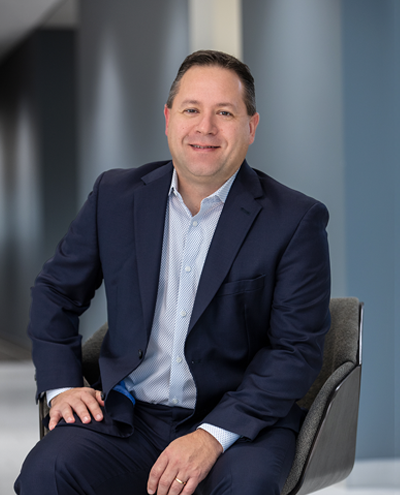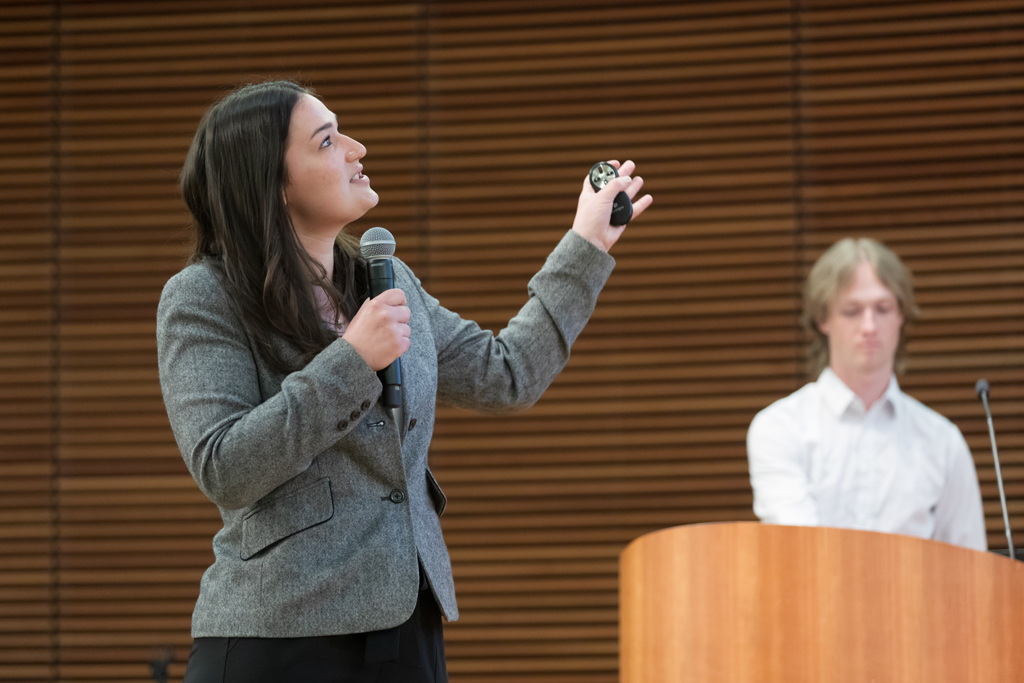
School of Pharmacy alum Brent Eberle, a leader in a generics company, shares his top predictions for where the industry is headed
By Archer Parquette
The affordability of pharmaceuticals has been a major news focus in recent years, including generics and biosimilar medications, as the industry explores ways to expand access, improve supply chain resilience, and speed up the approval process for lower-cost alternatives. These efforts reflect growing momentum to bring more manufacturing back to the U.S. and reduce dependence on overseas suppliers.
Brent Eberle (BS ’98) is the president of CivicaScript, a pharmaceutical company that manufactures and distributes generic medicine at lower prices. With a front-row seat to these developments, Eberle shares his insights and predictions for the future of generics, from drug shortages to transparency.
Risk mitigation
Over 90% of the prescriptions Americans take are generics. At the same time, according to the Food and Drug Administration, less than 30% of the active pharmaceutical ingredients used to manufacture those drugs in the U.S. market are made in the U.S. The majority are made in China, India, and Europe, among other overseas manufacturers.
Recent efforts at the federal level aim to bring more manufacturing stateside, in part by removing regulatory barriers to construction in the U.S.
“Generics have moved offshore over the last number of years, and that creates some risk if the majority of essential products are made in another country,” Eberle says. “There’s a lot that’s unknown, I think there’s an overall push to try to bring more manufacturing back to the United States. If we have more generic manufacturing happening domestically, we would ideally have fewer quality concerns, fewer shortages, and a more predictable supply and pricing.”
Fewer inpatient generic drug shortages

Eberle says that one of his biggest professional hurdles is inpatient drug shortages. Those shortages disproportionately impact generics. In the first quarter of 2024, drug shortages hit an all-time high of 323, surpassing the 2014 record of 320.
“Shortages are a huge concern on the inpatient side,” he says. “At any given point, there can be 200 to more than 300 products on the FDA shortage list. It’s been a problem for years. When drug shortages happen, it can be very stressful for patients. Sometimes it results in costs going up.”
He says hospitals and health systems have implemented strategies to mitigate the issue, but that it remains a major concern. In 2025, active drug shortages on the FDA list dropped to 270. Eberle believes increased domestic production could help bring that number lower.
“More manufacturers creating a more predictable supply will definitely help patients,” Eberle says. “It would protect against the uncertainty of shortages and create a more predictable situation.”
More competition
Three years ago, CivicaScript launched its first generic medication — abiraterone acetate, which treats prostate cancer. Before the company made the alternative available, the average cost of abiraterone was over $3,000 a month for someone with Medicare Part D. CivicaScript’s generic version cost $160 per month.
The company was able to achieve such a dramatic price drop by targeting a medication that could be manufactured at a relatively low cost, but the inherent challenges and lack of transparency across the drug ecosystem resulted in a higher cost to patients and plan sponsors. In the current model all too often many of the players can benefit when costs go up.
“The CivicaScript model addresses that head on,” says Eberle.
Increased generic approvals increases the chance for companies like CivicaScript to compete — and bring down prices as a result.
“If there’s one thing I’m always really excited about, it’s our ability to save patients’ money,” says Eberle. “We’re in the process of launching additional products in the specialty generic space and exploring how we can bring help in the biosimilar space.”
Increased transparency
“Sometimes drugs that can be manufactured at $200 are being sold at $2,000 when it reaches the patient,” Eberle says. “One of my goals is to add transparency through the drug supply chain.”
From manufacturing through sale, Eberle anticipates that the generics process will become increasingly transparent over time if the manufacturing aspect — both ingredients and the medication itself — is brought on-shore.
Eventual price stabilization
Generic drug prices are significantly lower than their brand-name alternatives — and many of those generic prices have been dropping in recent years. As more generics enter the market, they tend to bring down the price of other generics for the same drug. But as those prices continue to drop across the industry, Eberle believes that on the macro scale, we’ll soon reach the end of that trend.
“It’s important to always remember that about nine out of every 10 prescriptions are filled for a generic product.”
—Brent Eberle
“When talking about price, it’s very important to be specific in whose price are we talking about,” Eberle says, noting that there are several tiers to drug pricing: manufacturer to the wholesaler, the wholesaler to the pharmacy, the pharmacy to the PBM, the PBM to the plan sponsor, and ultimately, the cost to the patient. The long journey of a pharmaceutical product adds to the complexity of discussing drug pricing, he says.
“We’ve seen generic pricing continue to go down — I’m not sure how much lower generic pricing can go,” Eberle says. “I think we’ll likely see a stabilizing of generic costs over time.”
While shortages remain a major issue, Eberle is optimistic about the future of generic affordability and manufacturing, and he emphasizes the importance of continuing to expand access.
“It’s important to always remember that about nine out of every 10 prescriptions are filled for a generic product,” he says. “Making sure that we have an adequate number of manufacturers and an adequate supply to cover the thousands of generic drugs people need is crucially important.”

